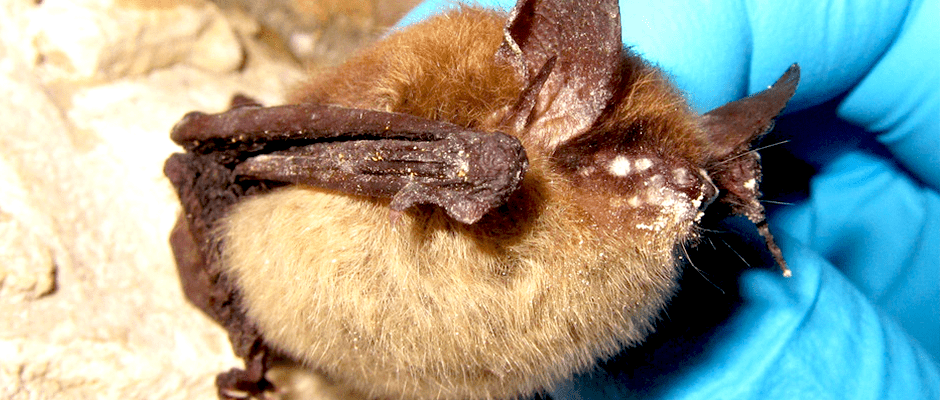Share this article
USFWS Regulates Human Interactions with Listed Bat Species
The U.S. Fish and Wildlife Service released a final ruling regarding human interactions with the northern long-eared bat (Myotis septentrionalis) under the Endangered Species Act. The final ruling comes after a 90-day public comment period, which closed on Dec. 15, 2015.
The northern long-eared bat was listed as threatened under the Endangered Species Act on Apr. 2, 2015. This bat species has an expansive distribution across most of the United States and within 13 Canadian provinces. The primary cause of decline in species’ numbers is white-nose syndrome, a fungal disease that compromises the immune system of afflicted individuals during hibernation. The disease has caused a 90 – 100 percent decline in bat populations in which it occurs.
The ruling, which was posted to the Federal Register on Jan.14, states that the incidental take (harassing or killing) of northern long-eared bats is allowed when the animal is roosting on human structures, puts human life or property at risk, or are found within trees that are deemed hazardous to human life or property. The handling and removal of the species is restricted to permitted individuals under section 10(a)(1)(A) of the Act after May 3, 2016.
Incidental take under this rule is legal in areas where white-nose syndrome does not persist. It is prohibited in areas where the fungal disease has been found. “Take” of northern long-eared bat within these ranges includes the harassment of individuals within hibernacula (caves and mines) during hibernation and the physical alteration of entrances to these habitats.
Under this ruling USFWS set further guidelines to prevent the excessive incidental take of the species. These guidelines include the banning of logging within 0.25 miles of known bat hibernacula and prohibiting the cutting or damaging of trees within a 150-foot radius of known breeding habitats. The northern long-eared bat breeding and pupping season takes place between June and July.
This rule becomes effective on Feb.16, 2016.
For more information, refer to TWS’ position statement on Wildlife Disease and Threatened and Endangered Species in the U.S.
Additional information provided by USFWS: Northern Long-eared Bat
Header Image: ©Steve Taylor/University of Illinois via USFWS Midwest








